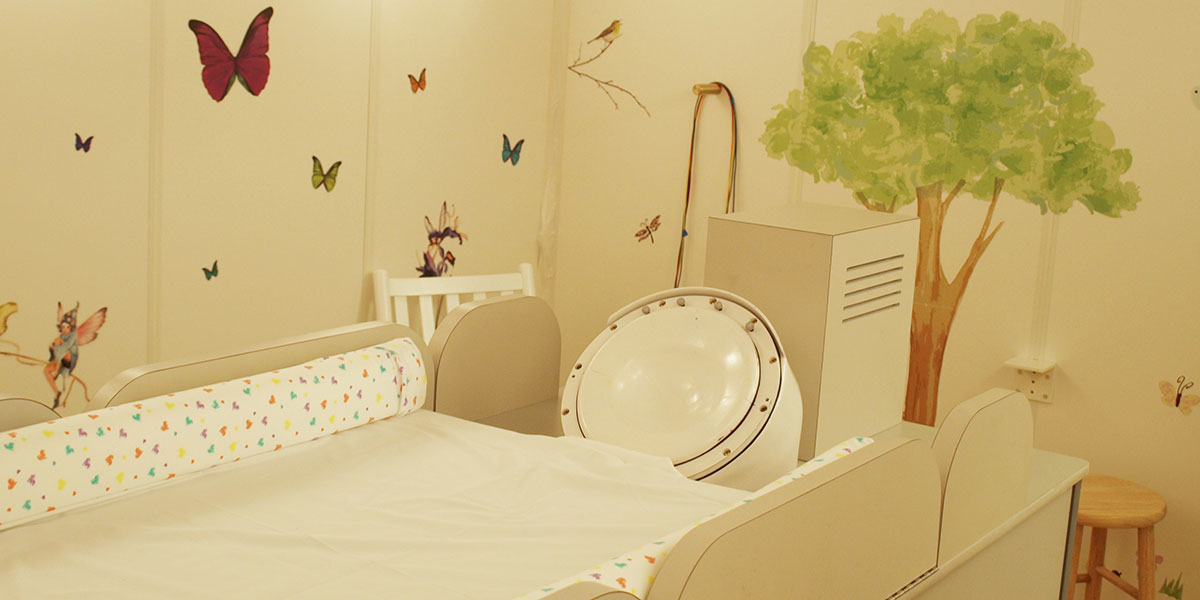Boston Children’s Hospital Creates a New Brain Imaging System For Infants

Photo provided by Boston Children’s Hospital.
Boston Children’s Hospital has been working to create a new device that can help doctors better understand brain disorders in infants, such as epilepsy and seizures. Now, after 10 years of work, researchers have created the baby magnetoencephalography (MEG) system.
The $4 million system, funded by the National Science Foundation, is the brainchild of Boston Children’s Ellen Grant and Yoshio Okada. An MEG system, according to Okada, is a non-invasive scan that can measure the magnet fields and neural activity in the brain. Hospital reps say the duo sought to create an infant size version of an MEG system because sophisticated neuro-imaging technology has yet to be designed for an infant’s size and needs.
“Typically, the National Science Foundation doesn’t give grants to build equipment for hospitals,” Grant says. “But it’s important for us to understand the brain function in infants so we can transform how we manage pain in the neonatal intensive care unit (NICU).”
The baby MEG system differs from a normal MEG system because it’s lighter and smaller. Standard MEG systems are typically installed in a hospital’s basement because of its large size, but the baby MEG system will be installed next to the NICU.
“The space allows us to have a quiet, calming environment for the patients,” Okada says. “They can stay in the baby MEG for as little as one minute, five minutes, or even 20, and be comfortable.”
In addition, Okada and his colleagues created software that will allow the baby MEG system to display the patient’s data and brain activity while the scan is in progress.
“The baby MEG is like looking at a bare brain,” Okada says. “Imagine you can see the surface of the brain through a persons skull and that person begins to have a seizure. You will be able to see the activity happening to their brain. That is exactly what this baby MEG does; it allows us to see what is happening to the brain, as it is happening.”
Okada says that the baby MEG system uses a liquid helium to cool the devices sensors so they can connect with the superconducting quantum interference devices (SQUIDs). Once the sensors connect to the SQUIDs, they can record, measure, and map the magnetic fields in the human brain. The device also has 375 sensors, about 75 more than what is usually found in a typical MEG system, so it can deliver sharper, quicker images.
“No one has shown you this information before,” Okada says. “So if we can do this, it’s revolutionary to what we can find.”
The baby MEG system will begin testing its software as early as December, and the device is projected to be available for the hospital to use within the next three to four months.


